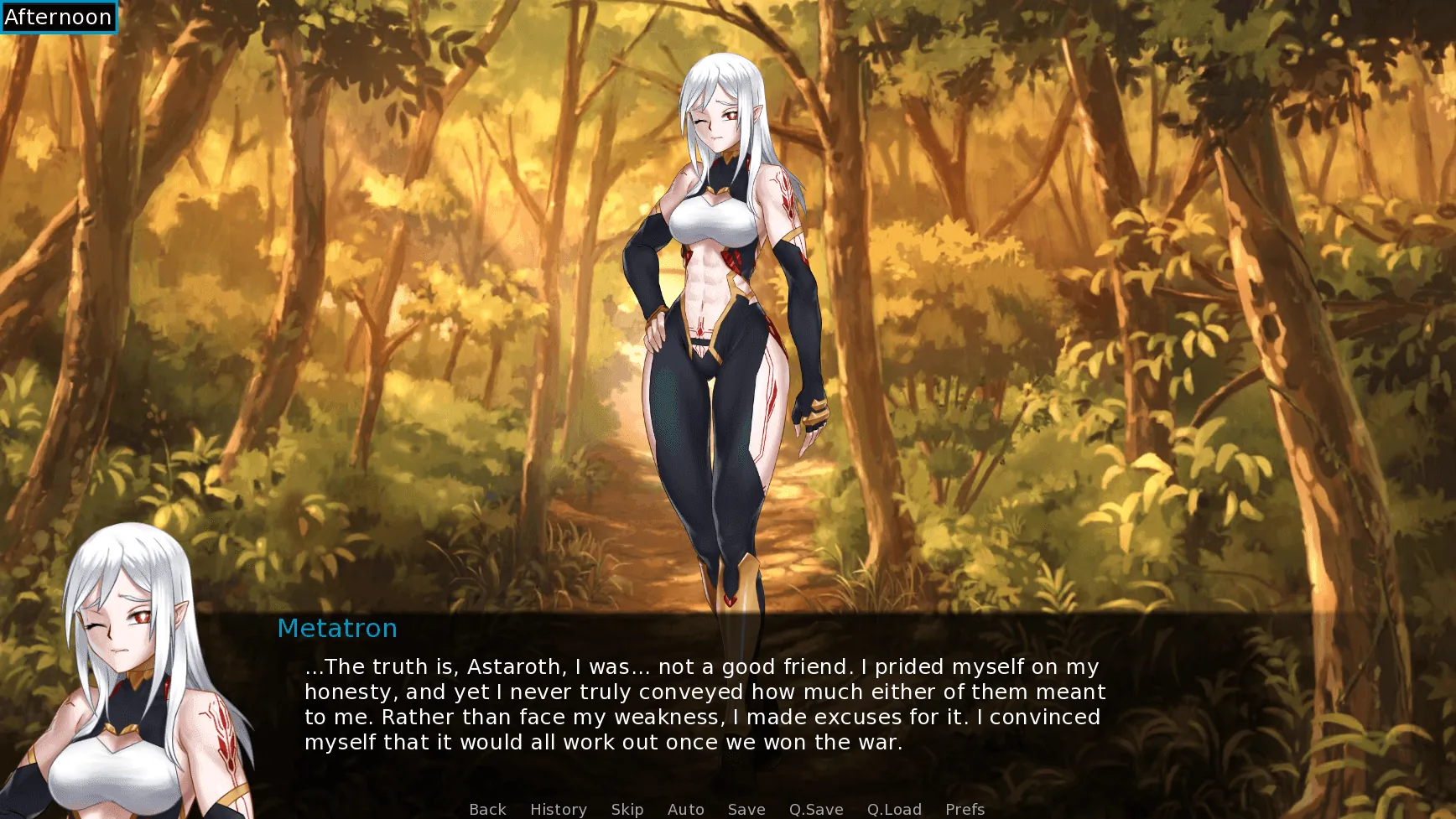
Time Implosion
Play Time Implosion
Time Implosion review
Master the murder mystery with time travel mechanics and multiple endings
Time Implosion is a gripping narrative-driven adventure that combines murder mystery storytelling with innovative time travel mechanics. As a new student accused of a classmate’s murder, you’re given a second chance when a mysterious figure intervenes, sending your consciousness back through time. This immersive experience challenges you to gather evidence, interact with complex characters, and make pivotal decisions that shape your journey toward uncovering the truth. Whether you’re a fan of detective games or interactive fiction, understanding the game’s core mechanics and strategic elements is essential to clearing your name and experiencing all the game has to offer.
Understanding Time Implosion: Core Gameplay Mechanics and Story
The Murder Mystery Setup: Your Journey Begins
Picture this: you’re just an ordinary high school student, worrying about homework and friendships, when suddenly your world implodes. You’re standing over the body of your classmate Melissa, and everyone thinks you did it. The evidence is stacked against you, the system fails you, and you’re executed for a crime you didn’t commit. 😱 But just when you think it’s over, everything resets. An enigmatic figure pulls your consciousness back through time, giving you a second chance—and a mission to uncover the real killer.
This gripping premise sets the stage for Time Implosion, a murder mystery game with time travel that will keep you on the edge of your seat. I remember my first playthrough—I was so overwhelmed by the initial accusation scene that I almost missed crucial environmental clues. The game throws you directly into the deep end, making you feel the protagonist’s desperation and confusion.
The Time Implosion story explained begins with this devastating false accusation and execution, followed by your mysterious salvation. You’re not just reliving the same day—you’re unraveling it layer by layer, with each loop revealing new possibilities. The narrative cleverly plays with your expectations, making you question everything you thought you knew about the characters and events leading up to Melissa’s death.
Pro Tip: Don’t rush through the initial scenes, even if you’re tempted to “get to the time travel part.” The foundation of your entire investigation is built on understanding what happens during those first fateful hours.
What makes this setup particularly brilliant is how it merges traditional mystery elements with supernatural intervention. You’re not just solving a crime—you’re fighting against fate itself. The emotional weight of your character’s wrongful execution carries through each timeline, motivating you to dig deeper and question everything.
Time Travel Mechanics: Rewinding and Gathering Evidence
The heart of Time Implosion gameplay mechanics lies in its innovative approach to temporal manipulation. Unlike other games where time travel might feel like a simple “undo button,” here it’s an intricate tool for investigation. Learning how to rewind time in Time Implosion is your key to unlocking the truth, and it’s more nuanced than you might expect. ⏳
The mechanics work through a combination of scene selection and real-time rewinding. You can jump back to specific key moments or rewind continuously through conversations and events. What’s brilliant is how the game remembers your previous attempts—characters might react differently if they’ve seen variations of your behavior across timelines.
Let me walk you through a real scenario from my playthrough that demonstrates the power of these mechanics:
During my investigation of the school library scene, I initially focused on Melissa’s direct interactions. After hitting several dead ends, I decided to rewind further back than usual—to before Melissa even entered the library. From this earlier vantage point, I noticed the librarian nervously rearranging books near the crime scene location. By examining these books after rewinding, I discovered hidden messages that completely changed my understanding of the librarian’s involvement. This small adjustment in my rewinding strategy opened up an entirely new branch of the investigation.
This example shows why gathering evidence in Time Implosion requires creative thinking about temporal positioning. The same location can yield different clues depending on when you examine it and what you already know from future timelines.
The Time Implosion gameplay mechanics for evidence collection work on a “temporal awareness” system. As you discover clues in different timelines, your character’s notebook automatically cross-references information. A piece of evidence that seems insignificant in one context might become crucial when viewed alongside information from another timeline.
Here’s what makes the time manipulation so effective:
- Layered Discovery: Each rewind can reveal new dialogue options based on evidence you’ve collected in other timelines
- Contextual Awareness: Characters react to knowledge you “shouldn’t have” if you’re not careful about revealing future information
- Butterfly Effect Tracking: The game visually shows how your interventions create ripple effects across the timeline
- Evidence Synthesis: Clues automatically connect across timelines in your investigation journal
Personal Insight: I learned the hard way that rewinding too frequently without proper planning can actually contaminate your investigation. Sometimes, you need to let events play out fully in one timeline to establish a baseline before making changes.
Mastering how to rewind time in Time Implosion means understanding that you’re not just observing history—you’re actively shaping it through your interventions. The game challenges you to think in four dimensions, considering not just what happened, but when and why it happened, and how changing one moment affects the entire web of events.
Character Interactions and Relationship Building
If the time travel mechanics are the brain of Time Implosion, then the character system is undoubtedly its heart. The Time Implosion character relationships are complex, dynamic, and absolutely essential to solving the mystery. Unlike many games where NPCs feel like information dispensers, every character in this world has their own secrets, motivations, and evolving reactions to your investigation. 💫
What makes the relationship system so compelling is how it intersects with the time travel premise. Characters remember your significant interactions across timelines, even if they can’t quite place why you seem familiar. This creates fascinating opportunities—and potential pitfalls—as you navigate social encounters.
During my first playthrough, I made the classic mistake of treating characters as puzzle pieces rather than people. I’d rewind conversations repeatedly to extract maximum information, not realizing that my robotic interrogation style was making characters suspicious of me. It wasn’t until I embraced organic, sometimes imperfect interactions that I began making real progress.
The Time Implosion character relationships develop through several key systems:
- Trust Metrics: Each character has hidden trust levels that affect what they’ll share with you
- Memory Echoes: Characters subconsciously remember impactful interactions from previous timelines
- Relationship Webs: Your interactions with one character can influence how others perceive you
- Temporal Consistency: Characters notice if your knowledge doesn’t match your supposed timeline experience
The game features a diverse cast, each with their own connection to Melissa and potential motives for the crime. From the outwardly perfect student council president to the withdrawn art student who always seems to be watching, every character requires a unique approach. Some respond better to direct questioning, while others need you to earn their trust through multiple timelines and shared experiences.
Here’s a breakdown of effective relationship-building strategies:
| Character Type | Recommended Approach | Common Pitfalls |
|---|---|---|
| Suspicious Characters | Build trust across multiple timelines before asking sensitive questions | Confronting too early makes them hostile in all timelines |
| Anxious Characters | Use knowledge from future timelines to reassure them | Revealing too much future knowledge causes panic |
| Confident Characters | Challenge their assumptions with evidence from different angles | Direct contradiction makes them defensive and uncooperative |
| Mysterious Characters | Observe their patterns across timelines before engaging | Early intense focus makes them conceal their true nature |
What truly elevates the Time Implosion character relationships is how they evolve across your investigation cycles. A character who seemed antagonistic in early timelines might become your most valuable ally once you understand their motivations. Conversely, someone who appeared friendly initially might reveal darker dimensions as you peel back the layers through multiple time loops.
Case Study: I spent three entire playthroughs convinced that Melissa’s best friend was the killer because of her suspicious behavior. It wasn’t until I explored a timeline where I helped her with a completely unrelated personal problem that she opened up about what she’d really witnessed—exonerating herself and pointing toward the actual culprit.
This relationship depth makes Time Implosion much more than a simple whodunit. You’re not just solving a murder—you’re understanding a community, uncovering hidden connections, and discovering how everyone’s secrets intertwine. The characters feel real because their behavior changes meaningfully based on your actions across timelines, creating one of the most sophisticated social simulation systems I’ve encountered in any murder mystery game with time travel.
Investigation Mechanics and Strategic Approaches
The Time Implosion investigation guide wouldn’t be complete without diving into the core detective work that drives your progress. While the time travel elements provide the framework, traditional investigation skills are what ultimately solve the case. The game brilliantly balances supernatural mechanics with grounded detective work, creating an experience that feels both fantastical and satisfyingly logical. 🔍
What sets Time Implosion apart from other mystery games is how it integrates temporal awareness into every aspect of investigation. You’re not just looking for what’s present—you’re looking for what changes across timelines, what appears or disappears, and how evidence transforms when viewed from different temporal perspectives.
The gathering evidence in Time Implosion process works through several interconnected systems:
- Environmental Scanning: Every location contains multiple layers of clues visible from different time perspectives
- Conversation Analysis: Dialogue options expand as you collect more evidence across timelines
- Evidence Correlations: Your notebook automatically connects related clues from different time periods
- Timeline Comparison: You can view side-by-side comparisons of how scenes differ across your attempts
I learned through painful trial and error that successful investigation requires meticulous note-taking (both in-game and in real life). The game’s built-in journal is excellent for tracking evidence, but I found that keeping my own timeline maps and relationship charts helped me spot patterns the game didn’t explicitly highlight.
The Time Implosion investigation guide approach that worked best for me involved what I call “temporal layering”:
- Baseline Timeline: Experience events without intervention to establish what “naturally” occurs
- Focused Intervention: Rewind to change one specific variable while keeping others constant
- Butterfly Effect Mapping: Track how that change ripples through other events and character behaviors
- Evidence Synthesis: Combine findings from multiple timeline variations to form hypotheses
This methodical approach prevents the common frustration of creating timeline chaos through haphazard interventions. Remember: every change has consequences, and sometimes the most valuable clues come from observing what remains consistent across different timelines rather than what changes.
Here’s a comparison of different investigation strategies and their outcomes:
| Investigation Approach | Key Features | Best For | Potential Drawbacks |
|---|---|---|---|
| Thorough Single Timeline | Complete exhaustive investigation in one timeline before rewinding | Players who prefer methodical, organized investigation | Can be time-consuming; may miss cross-timeline connections |
| Frequent Rewinding | Constant timeline jumps to test small hypotheses | Experimental players who enjoy testing butterfly effects | Can create timeline confusion; harder to track cause and effect |
| Character-Focused | Following one character across multiple timelines | Players who enjoy deep character analysis and relationships | May miss environmental clues and broader patterns |
| Evidence-Chain Following | Pursuing one piece of evidence across its timeline appearances | Analytical players who enjoy connecting dots | Can lead down rabbit holes that don’t advance the main mystery |
The branching narrative system means your choices genuinely matter in ways that aren’t always immediately apparent. Early interactions that seem inconsequential can dramatically alter late-game possibilities. This makes Time Implosion incredibly replayable—each investigation feels unique based on your approach and the relationships you prioritize.
Actionable Advice: Create a “timeline checkpoint” when you discover a major piece of evidence or have a breakthrough conversation. The game’s save system is generous with timeline slots—use them strategically to mark investigation milestones you might want to return to.
What makes the Time Implosion gameplay mechanics so satisfying is how they reward both intuition and systematic thinking. Sometimes the solution comes from a sudden insight during a rewind, while other breakthroughs emerge from carefully comparing evidence across multiple timelines. This balance ensures the investigation never feels either completely random or overly mechanical.
As you progress, you’ll develop your own investigation style, learning when to trust your instincts and when to rely on meticulous evidence collection. The game respects your intelligence while providing enough guidance to prevent frustration, creating that perfect sweet spot where solving the mystery feels like your accomplishment rather than just following game prompts.
Whether you’re methodically mapping every timeline variation or following your gut through intuitive leaps, the Time Implosion investigation guide principles remain the same: observe carefully, think temporally, and remember that every character—including Melissa herself—has a story worth understanding across all the timelines you explore.
Time Implosion delivers a compelling murder mystery experience that rewards careful investigation, strategic thinking, and multiple playthroughs. By mastering the time travel mechanics, understanding how your choices shape the narrative, and building meaningful relationships with characters, you’ll unlock the full potential of this immersive adventure. Whether you’re seeking to uncover the true killer, explore alternative storylines, or discover hidden endings, the game offers substantial replay value and engaging storytelling. The combination of detective work, time manipulation, and consequence-driven choices creates a unique experience that keeps players invested in clearing their name and uncovering the truth. Dive into Time Implosion today and experience the thrill of solving a mystery where every decision matters.





















